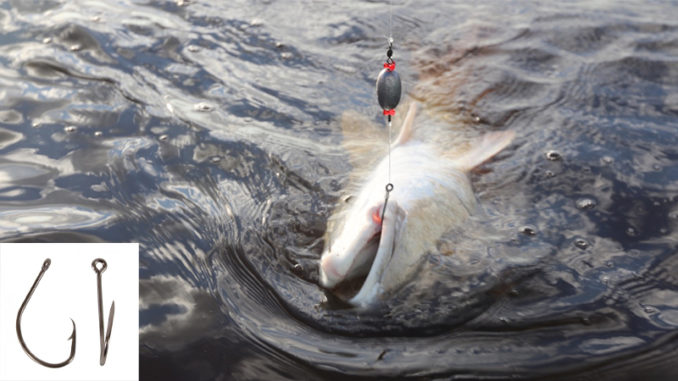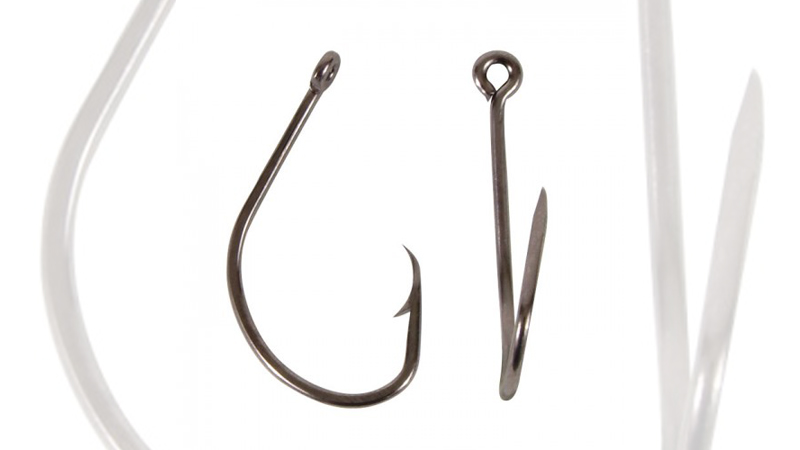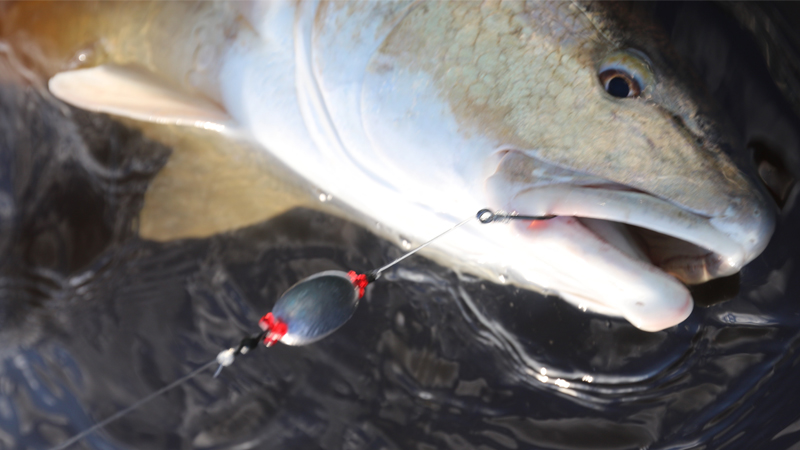
When you’re planning to release fish, go with a straight circle hook, not an offset
Circle hooks have long been known, thanks to their design, to hook most fish in the corner of the mouth. I’ve been using them for about 10 years while chasing inshore fish. But this year, for the first time, I gut-hooked a pretty good number of redfish and speckled trout while using circle hooks.
On one trip, I caught about a dozen redfish, and had to cut the line twice because the hook was too deep to remove without harming the fish. My friend caught as many fish as I did, and all his fish were hooked in the corner of the mouth, just as circle hooks are supposed to do. I couldn’t recall him ever gut-hooking a fish, so I asked him about it.
“I use a Mustad Demon Perfect Circle in 3/0,” he said. “That’s what I’ve found that works best for me. All circle hooks aren’t created equal.”
Before our next trip, I pickled up a bag of his preferred hooks. On the incoming tide in our favorite Lowcountry creek, the waves from the open ocean breach one bank, pushing baitfish into the spartina grass on the opposite bank. Redfish stack up here, and we drift down the grass line in kayaks with our rods in rod holders. It’s the perfect scenario for circle hooks. They allow fish to hook themselves, giving us time to focus on paddling until we have no choice but to pick up the rod.

It’s about a 30-yard drift, and the action is fast and hot for about 45 minutes. By then, the tide is high, the creek is leveled out, and the fish break up and scatter. So time is critical.
Small details make big differences
I was glad I had an extra rod after catching my third fish, which was surprisingly gut-hooked. Still, my friend had time to cut in front of me and land a bonus fish before I was back drifting down the line.
Several fish later, I gut hooked an over-the-slot fish, cut the line, and released the fish. As I re-tied, I wondered why I was still gut-hooking fish.
Once the bite shut down, my friend and I compared notes. He pointed out a small detail that made a huge difference. I’d purchased 3/0 Mustad Demon Perfect Circle Offset hooks. His were 3/0 Mustad Demon Perfect Circle hooks. No offset.
“Noooo, not the offset ones,” he said. Comparing our hooks, he showed that although the point on mine was curved back toward the hook shaft, it wasn’t pointing at the shaft in a straight line.
The extended path of my hook’s point ran to the side of the shaft, showing they would never touch. But the same imaginary extended path on his hit the shaft of his hook.

Then, he held my line a foot above the hook and pulled the hook against the palm of his other hand. When the hook point contacted his skin, it would catch slightly. Doing the same trick with his hook, the hook point never had a chance to catch.
“That’s what happens when that offset hook is pulling out of the fish’s throat. The true circle hook glides all the way out until it gets hooked in the corner of the mouth. The offset circle sometimes snags deeper down,” he said.
Why offset circle hooks?
So why do manufacturers even make offset circle hooks? Further research showed me it’s for a few reasons. One, it’s easier to hook large live or cut baits onto offset hooks. Two, the hookup ratio is slightly higher than with true circle hooks. And three, they allow anglers more options to follow the regulations set by some states and tournaments that require circle hooks for certain species. However, many of those requirements are now specifying that offset circle hooks are banned.
North Carolina anglers are now required to use inline circle hooks when fishing for certain species like grouper, snapper, and sharks. It’s also mandatory for South Carolina’s snapper and grouper anglers.
So if you’re fishing for dinner, occasionally gut-hooking a fish that’s going in the cooler isn’t a big deal. Offset circle hooks are a good option, as long as they’re legal for the species you’re catching. They still get the corner of the mouth more often than J-hooks and have a higher hookup ration than true circle hooks. But for catch-and-release fishing, and when fishing for species with slot limits and low creel limits, stick with true circle hooks to make your life — and the fishes’ lives — easier.
Click here for more information on using circle hooks.




